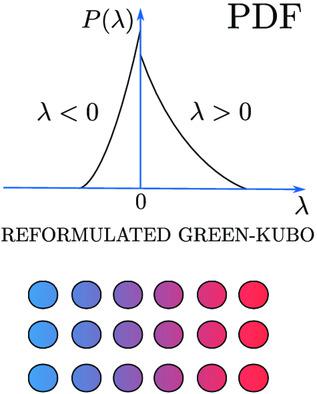当前位置:
X-MOL 学术
›
Phys. Status Solidi B
›
论文详情
Our official English website, www.x-mol.net, welcomes your
feedback! (Note: you will need to create a separate account there.)
Statistical Analysis and Molecular Dynamics Simulations of the Thermal Conductivity of Lennard–Jones Solids Including Their Pressure and Temperature Dependencies
Physica Status Solidi (B) - Basic Solid State Physics ( IF 1.5 ) Pub Date : 2020-07-22 , DOI: 10.1002/pssb.202000344 David M. Heyes 1 , Daniele Dini 1 , Edward R. Smith 2
Physica Status Solidi (B) - Basic Solid State Physics ( IF 1.5 ) Pub Date : 2020-07-22 , DOI: 10.1002/pssb.202000344 David M. Heyes 1 , Daniele Dini 1 , Edward R. Smith 2
Affiliation

|
Aspects of the thermal conductivity, λ, of a Lennard–Jones (LJ) solid along an isotherm and the sublimation line are studied using equilibrium molecular dynamics (MD) simulations. A reformulation of the Green–Kubo time correlation function expression for λ in the form of a probability distribution function (PDF) of single trajectory contributions (STC) exhibits the same characteristic statistical trends as found previously for liquids, even at high pressures and low temperatures. The analysis reveals that for short periods of time the thermal conductivity can be negative. This feature is evident along the sublimation line isobar and a low‐temperature isotherm going to high densities. Along the isobar and isotherm lines, λ is to a good approximation a power law in temperature and density, respectively. This behavior is used in a more general thermodynamics‐based analysis description of the state point dependence of the thermal conductivity. The heat flux autocorrelation function increasingly develops a damped oscillatory appearance as pressure increases or temperature decreases, consistent with the phonon formulation of thermal conductivity.
中文翻译:

Lennard-Jones固体的热导率及其压力和温度依赖性的统计分析和分子动力学模拟
使用平衡分子动力学(MD)模拟研究了沿等温线和升华线的Lennard-Jones(LJ)固体的热导率λ的各个方面。以单轨迹贡献(STC)的概率分布函数(PDF)形式对λ的Green-Kubo时间相关函数表达式进行重新表述,即使在高压和低温下,也表现出与以前液体相同的特征统计趋势。 。分析表明,在短时间内,导热系数可能为负。沿升华线等压线和低温等温线趋于高密度时,此功能显而易见。沿着等压线和等温线,λ分别是温度和密度的幂律。此行为用于基于导热系数的状态点依赖性的更一般的基于热力学的分析描述中。随着压力增加或温度降低,热通量自相关函数逐渐形成阻尼的振荡外观,这与声子的导热系数公式一致。
更新日期:2020-07-22
中文翻译:

Lennard-Jones固体的热导率及其压力和温度依赖性的统计分析和分子动力学模拟
使用平衡分子动力学(MD)模拟研究了沿等温线和升华线的Lennard-Jones(LJ)固体的热导率λ的各个方面。以单轨迹贡献(STC)的概率分布函数(PDF)形式对λ的Green-Kubo时间相关函数表达式进行重新表述,即使在高压和低温下,也表现出与以前液体相同的特征统计趋势。 。分析表明,在短时间内,导热系数可能为负。沿升华线等压线和低温等温线趋于高密度时,此功能显而易见。沿着等压线和等温线,λ分别是温度和密度的幂律。此行为用于基于导热系数的状态点依赖性的更一般的基于热力学的分析描述中。随着压力增加或温度降低,热通量自相关函数逐渐形成阻尼的振荡外观,这与声子的导热系数公式一致。











































 京公网安备 11010802027423号
京公网安备 11010802027423号